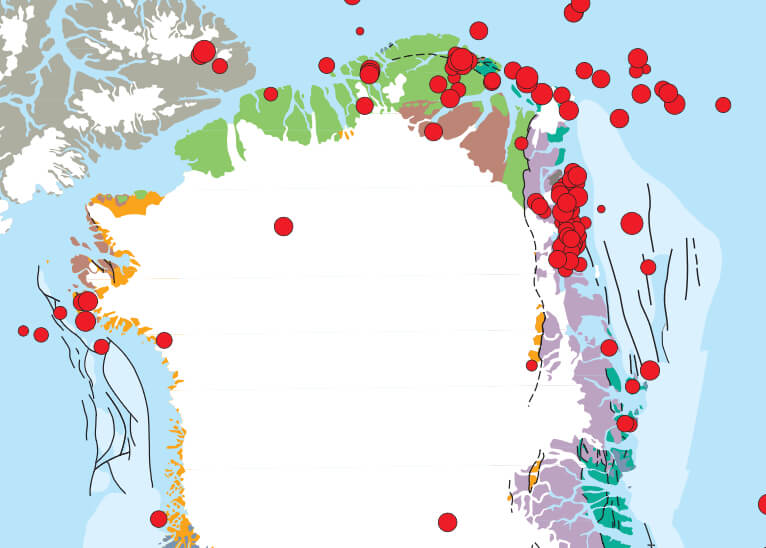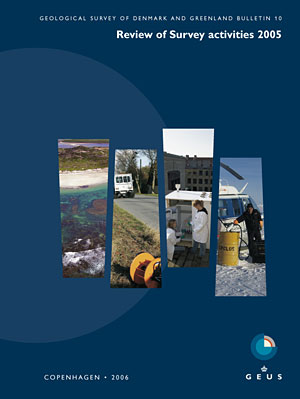
How to Cite
Share
Abstract
Earthquake seismology is a rapidly evolving field that has provided a wealth of new information about deep geological structures on a regional scale over the last decade as well as information about dynamic processes in the Earth. A major leap forward was the development of portable digital broad band (BB) seismographs around 1990. Without any changes in configuration, these are able to record the signals from large distant earthquakes, as well as the signals from weak local events. BB seismographs typically cover a frequency range from 0.0083 Hz to 50 Hz, making them useful for studies ranging from the high frequency signals from explosions to the very low frequency oscillations following major earthquakes. The first seismological observatory in Greenland was established in 1907 in Qeqertarsuaq (GDH) and was in service for about five years (Hjelme 1996). Later, seismographs were established in Ivittut (1927) and Illoqqortoormiut (1928; SCO), and the network has been regularly upgraded and expanded ever since (Fig. 1). Prior to the development of BB seismographs, each station was equipped with a set of seismographs with different frequency sensitivities in an attempt to cover both distant and local earthquakes. Now just one small instrument is needed at each location. The Geological Survey of Denmark and Greenland (GEUS) operates four permanent BB seismographs in Greenland (Fig. 1), two of them in collaboration with foreign institutions. In addition to the permanent network, there are currently 13 temporary BB seismographs active in Greenland, of which eight are operated by GEUS. Three of the temporary seismograph stations were established as part of the Danish Continental Shelf Project (Marcussen et al. 2004), and the remainder in connection with research projects. Three temporary seismographs were deployed during 2005 as part of a research project aiming to resolve very deep regional structures in North Greenland: the Citronen Fjord station (CFJ, Continental Shelf Project), and the stations in Kullorsuaq (KUL) and Daneborg (DBG).
How to Cite
Share
Downloads
Editors: Martin Sønderholm & A.K. Higgins
The Review of Survey activities presents a selection of 15 papers reflecting the wide spectrum of activities of the Geological Survey of Denmark and Greenland, from the microscopic to the plate tectonic level.
Activities in Denmark: The Survey's field of activities in Denmark is illustrated by four papers on [...]










